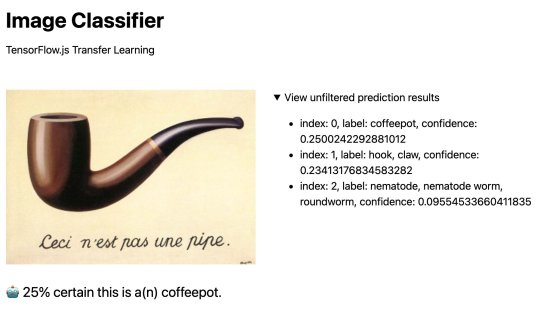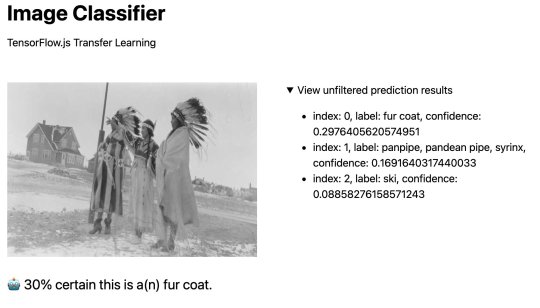#msulibraries
Explore tagged Tumblr posts
Text

This week's #zine #review is "MSUL Early UK Punk Zine Highlights" by Joshua Barton and Michigan State University Libraries (MSUL)!
On April 12th, Lansing had its first Independent Comics & Zine Fest. I got there a few hours in and had a wonderful time.
The local university's library system (@msulibraries) had a table there, and that's where I got this zine. I had known the library had a zine collection, but I'd never thought too deeply about what kind of zines they had. Barton shares pictures and descriptions here -- lots of 70's punk and typewriters!
I'm really happy the library had a table there. It's such a perfect event for libraries and I'm surprised I don't see more libraries at zine fests.
#zinereview #infozine #zinesaboutzines
6 notes
·
View notes
Photo



Today, April 23, is Shakespeare’s birthday! Maybe. Supposedly. It was certainly the date of his death in 1616, but it also commonly celebrated as the date of his birth, some 52 years earlier in 1564.
Several editions of the Bard’s works were printed before his death, but the most complete and most famous collections of his plays are the large folio editions, produced posthumously.
While these beautiful and rare 17th century Shakespeare folios are a significant improvement over the earlier “bad” quarto versions, they are far from perfect copies of Shakespeare’s works.
In the case of own Fourth Folio, it appears as though a previous owner sought to correct some of the numerous typographical errors throughout the volume. Our dutiful annotator has also added several marginal notes commenting on various passages in the text.
Some of these typos really change the meaning of the text in humorous ways:
If good? Why do I yield to that suggestion, Whose horrid image doth unfix my heir [hair]
- Macbeth, Act I, Scene 3
What if it tempt you toward the Floud, my Lord? Or to the dreadful Sonnet of the Cliff [summit]
- Hamlet, Act I, Scene 4
My fault is past. But oh, what form of Prayer Can serve my turn? Forgive me my foul Mother [murther/murder]
- Hamlet, Act III, Scene 3
All those bored scholars with nothing better to do than overanalyze Shakespeare’s works looking for hidden messages should have a field day with some of these passages.
44 notes
·
View notes
Photo

Before and after dyeing a Japanese paper spine repair. Very pleased with the results! - Bexx #bookrepair #bookconservation #msulibraries #specialcollections (at MSU Libraries)
37 notes
·
View notes
Text
The image classifer is in agreement about this treachery. This is a coffeepot.

As part of my research informatics work, I've been prototyping how we can use #machinelearning to create metadata or connect it to scholarship and research processes. This image classifier uses #transferlearning based on the ImageNet database of 14,197,122 images (http://image-net.org) and samples a few @msulibrary digital collection images. Use the link below and refresh to cycle through the predictions.
https://www.jasonclark.info/files/image-classifier/
Opening René Magritte jokes aside... This prototyping has been instructive to understand the limitations of #machinelearning image classification. More importantly, it gives me faith that this can be improved with some additional models. The #TensorFlow library I'm using here allows me to register the confidence it has in the predictions. Moreover, I can train and serve an additional model to help it. There is a path to improvement.
Too often, I've seen these limitations put forward as reasons to not pursue or worry about how #machinelearning will work in cultural heritage settings. A refrain of "Oh, that dumb machine can't figure out what this is!" But, the scale and opportunity to refine our metadata and classification routines within these tools is too hard for me to ignore. The scale gives me pause. Because if we get classification and description wrong, we not only impact discovery, we might also label someone's humanity incorrectly. See image below where Native American context is not present in the prediction.

These #machinelearning classification applications need to be grounded in requirements of "do no harm" & ethics. Sara Mannheimer has been leading some of our local and national work around these ethical questions and I'm looking forward to seeing where we go from here. And if you are interested, code for the #transferlearning image classifier is available here: https://github.com/jasonclark/image-classifier.
0 notes
Photo

RT @msulibraries: Today is #WorldBookDay! Did you know that we have more than 5 million volumes of books? #HappyReading https://t.co/PccOAh8OYW 2PLAN22 http://twitter.com/2PLAN22/status/969301208434397184
Today is #WorldBookDay! Did you know that we have more than 5 million volumes of books? #HappyReading pic.twitter.com/PccOAh8OYW
— MSU Libraries (@msulibraries) March 1, 2018
0 notes
Text
Dear, sweet, wonderful, beautiful friends, my newest project at work is a blog for our department. If you could give us a follow and maybe like/reblog the first post, I could be your devoted acolyte? *puppy eyes*
>>>>> @msulibraries <<<<<
9 notes
·
View notes
Photo

Thanks to @uilibraries ILL (and thanks to @msulibraries as well) for guiding this gem into my hands. (at UI Parking and Transportation)
0 notes
Photo







Some of the really cool books that we saw during our Book Arts class saw during our visit to the Special Collections department.
135 notes
·
View notes
Photo



More highlights from our file of “Things Found in Library Books!”
One interesting piece from this collection of orphaned ephemera is a troop billet card for the U.S.S. Leviathan, a massive German-built steamship seized by the United States in 1917 and used as a troop transport during World War I. While we can’t quite make out the name penciled on the back of the card, we can (just barely) read the annotation below, which allows us to date this particular voyage:
Left New York Harbor June 15th 1918
Can anyone read the name of the soldier in bunk #895? While we can’t say for sure if the former owner of this card made it home from the War, the fact that the card survived gives us some hope.
During its tenure as a military transport, the Leviathan ferried over 119,000 American troops between the United States and Europe. After the War ended, the ship was refitted again to serve as a passenger liner for the United States Lines, and continued to sail across the Atlantic for another 20 years.
#Found in a book#ephemera#laid-in material#bookmarks#world war 1#steamship#provenance#msulibraries#special collections
21 notes
·
View notes
Photo

Today I’m working with Sean up in the Digital Scholarship Lab to 3d scan our cuneiform tablet. We’ll use the scan to create a 3d printed model and to view it in virtual reality. - Bexx #digitalscholarshiplab #msulibraries #michiganstateuniversity #3dprinting #3dscanning (at MSU Libraries)
10 notes
·
View notes
Photo








Reveries of a Bachelor
Though very few modern readers would recognize the name of Donald Grant Mitchell, his collection of sentimental vignettes, Reveries of a Bachelor (written under the pseudonym “Ik Marvel”) was one of the most popular novels of the Victorian era. It was a favorite of Emily Dickinson, and has even been compared to Uncle Tom’s Cabin in its popularity and influence.
Aside from serving as U.S. consul to Venice from 1853 to 1854, Mitchell (1822-1908) spent much of his career writing at Edgewood, his estate near New Haven, Connecticut. Portions of Reveries of a Bachelor first appeared in the Southern Literary Messenger in 1849, and then in 1850 it was published in book form, going through dozens of editions in the following decades. Excerpts were even reprinted by insurance companies and the makers of tonic medicines to be distributed to potential customers.
The text itself is divided into four “reveries” in which a bachelor contemplates boyhood, marriage, country life, travel, and even the phenomenon of dreaming itself. Chapters include “Smoke – signifying doubt,” “Blaze – signifying cheer,” and “Ashes – signifying desolation.”
We were fortunate enough to have recently acquired a fascinating copy of the 1886 New York edition of Reveries of a Bachelor. Our copy was originally purchased in 1887 by Clifford Julius King (1865-1910), an Ohio attorney who practiced in Ashtabula (as King did not marry until 1891, he was still a bachelor himself when he bought the book). King had more than just a passing interest in books, as he was a member of the Rowfant Club, an organization for bibliophiles founded in 1892 in Cleveland and still active today.
King is presumably responsible for several other characteristics that make this copy stand out. First is a signed letter by Mitchell, perhaps written to King, pasted into the volume along with two portraits of the author. The letter reads:
My dr. Sir –
I have yr favor of 2nd inst to send you the autograph you ask for: I am too old a man to make engagements far from home.
Yrs vry truly, Dond. G. Mitchell
Edgewood 4th Novr. 1891
Additionally, an artist known only by the initials B.K.C. has contributed numerous pen and ink wash illustrations to this copy, some of which bear an 1887 date. In total, there are seven full-page images, 17 head and tail vignettes, and 73 marginal illustrations. These drawings really bring Mitchell’s text alive, and the marginal vignettes especially heighten the dream-like aspect of the book, depicting subjects such as a hand lighting a lamp, a foot entering a shoe, or the floating head of a woman.
Though it is not explicitly stated, it is likely that Clifford Julius King, due to his bibliophilic interests, was responsible for embellishing this copy by collecting the Mitchell paraphernalia and assembling it together with the illustrated text. The result is a copy of Reveries of a Bachelor that is truly unique — and truly special!
http://catalog.lib.msu.edu/record=b12953883~S39a
#19th century#victorian#novels#autographed copy#marginalia#illustration#rare books#special collections#msulibraries
11 notes
·
View notes
Photo



Remember, remember, the fifth of November!
Tonight is Guy Fawkes Night, an annual remembrance in the United Kingdom of the failed Gunpowder Plot of 1605, in which Robert Catesby, Guy Fawkes, and other Catholic revolutionaries attempted to assassinate the Protestant King James I by blowing up the House of Lords during the opening of Parliament.
This 1606 account of the trial of Henry Garnet, one of the Gunpowder Plot conspirators, bears an interesting and relevant presentation inscription pasted onto the front endpaper:
Presented to the Revd. Athels[ta]n Corbet, with the respects of Revd. Dickinson Macclesfield March 12th, 1872
I send the above to be pasted in the book or committed to the fire, without the aid of gunpowder
Obviously (and thankfully, for provenance purposes), this presentation note was spared the fire!
~Andrew
#guy fawkes#guy fawkes night#gunpowder plot#5th of november#book inscriptions#presentation inscriptions#rare books#msulibraries
10 notes
·
View notes
Photo

Is it Mold?
Mold in library collections can present a serious hazard to both collections and human health. Active mold is usually obvious (wet and fuzzy), but inactive mold is easily confused with dirt, foxing, or other staining.
In order to help library and archives staff identify signs of mold (and when to contact Conservation), I created this handy infographic. Please feel free to share!
633 notes
·
View notes
Photo

Check out this pro tip on how to avoid damaging your books when removing them from the shelf. Proper handling is key to keeping your collection in good condition! Please feel free to share so long as you link back/cite your source. #preservation #conservation #msulibraries #specialcollections #bookstagram #shelfie #preventativeconservation #shelving (at MSU Libraries)
#preservation#msulibraries#shelfie#preventativeconservation#bookstagram#specialcollections#conservation#shelving
110 notes
·
View notes
Photo

Some pretty publisher’s cloth bindings seen in the Special Collections stacks.
171 notes
·
View notes
Photo

Check out the fabulous edge decoration on this book. It was both gilt and gauffered, meaning it was decorated with gold leaf and then blind tooled with hot tools to create the pattern. #bookbinding #edgedecoration #specialcollections #msulibraries (at MSU Libraries)
81 notes
·
View notes